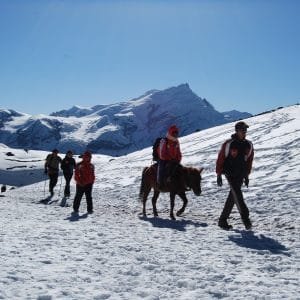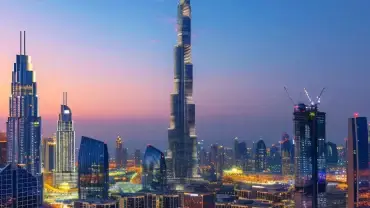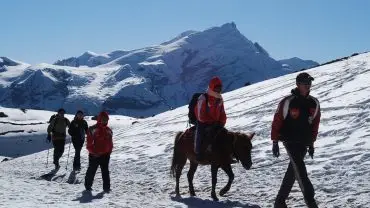An Overview about Exploring Nepal as a Holiday Destination
Exploring Nepal is an asset of every traveler because of its fascinating welcome. Nepal, a landlocked country nestled in the heart of the Himalayas, is often celebrated as one of the most diverse and appealing holiday destinations in the world. With a rich cultural tapestry and breathtaking landscapes, it offers an array of experiences that captivate travelers from various backgrounds. The geographical features of Nepal include eight of the world’s ten highest peaks, including the mighty Mount Everest, which not only attracts mountaineers but also nature enthusiasts and trekkers seeking awe-inspiring vistas.
The history of Nepal is as intricate as its geography, dating back thousands of years. This nation has been a melting pot of various cultures and religions, predominantly Hinduism and Buddhism, which is reflected in its stunning temples and architectural marvels. The Kathmandu Valley, home to numerous UNESCO World Heritage Sites, showcases an artistic heritage that has flourished over centuries. Sites such as Pashupatinath, Swayambhunath, and Bhaktapur highlight the intricate wood and stone carvings that depict the spiritual devotion of its people.
The warm hospitality of the Nepali people further enhances the allure of this holiday destination. Known for their welcoming nature, locals often share their customs, traditions, and cuisine with visitors, providing an immersive experience that transcends mere sightseeing. Authentic dishes such as dal bhat and momos, combined with traditional festivals like Dashain and Tihar, offer travelers a delightful glimpse into the daily life and rituals of the Nepali culture.
As travelers seek not only adventure but also cultural enrichment, Nepal stands out as a premier holiday destination that caters to a variety of interests. Whether one comes for trekking, spiritual journeys, or simply to bask in the natural beauty, the unique charm and captivating experiences await in this Himalayan gem.
Relaxation and Serenity: An Escape into Nature
Nepal, with its breathtaking landscapes and serene ambiance, offers a multitude of options for travelers seeking relaxation and rejuvenation. Nestled in the heart of the Himalayas, this enchanting destination is home to numerous tranquil retreats, each designed to provide an escape from the rigors of modern life. From yoga retreats that harmonize body and mind to luxurious spa experiences amidst nature, Nepal caters to a variety of relaxation needs.
Yoga retreats in Nepal often take advantage of the country’s picturesque settings. These retreats blend traditional practices with the stunning backdrops of the mountains and lush landscapes. Participants can immerse themselves in daily yoga sessions while enjoying fresh mountain air. Many facilities also integrate meditation classes, allowing guests to deepen their mindfulness practices. This combination of physical activity and meditation promotes holistic well-being, making it an ideal choice for anyone seeking inner peace.
In addition to yoga, Nepal boasts an array of spa experiences that reflect the region’s rich cultural heritage. Many local spas incorporate natural ingredients, featuring treatments inspired by traditional remedies passed down through generations. From soothing herbal massages to rejuvenating facials, these experiences are tailored to refresh and revitalize both body and soul. Guests at mountain lodges often find spa services available right on-site, enhancing the convenience and ensuring that relaxation is always within reach.
For those who prefer the tranquility of secluded lodges, Nepal provides an abundance of options. Many of these lodgings are situated in serene environments, allowing travelers to unwind while surrounded by nature. Luxurious mountain lodges often come equipped with amenities that prioritize comfort, making it easy for guests to melt away their stress. The calmness and fresh air found in these retreats make them perfect havens for relaxation.
This harmonious blend of nature and wellness practices makes Nepal an exceptional destination for those seeking peace and tranquility. The serene environments paired with a variety of relaxation options provide an unmatched opportunity to unwind and rejuvenate in a truly spectacular setting.
Adventure Awaits: Thrilling Activities in Nepal
Nepal is renowned for its diverse and exhilarating adventure opportunities that attract thrill-seekers from around the globe. One of the most sought-after activities is trekking, with the Annapurna Circuit and Everest Base Camp treks being prominent. These treks offer varying intensity levels, suitable for both experienced hikers and novice adventurers. The breathtaking landscapes, ranging from lush valleys to towering peaks, provide unparalleled views of the majestic Himalayas. The best times for trekking are during the spring and autumn months, ensuring ideal weather conditions.
Another popular adventure activity is white-water rafting. The rivers in Nepal, such as the Bhote Koshi and Trishuli, cater to adventurers of varying skill levels—ranging from mild rapids for beginners to extreme challenges for seasoned rafters. Rafting usually takes place during the spring and monsoon seasons when the rivers swell, offering thrilling rides and the chance to experience the stunning natural beauty of the country while navigating through exhilarating rapids.
Bungee jumping is another adrenaline-pumping activity, with the most famous site being the suspension bridge over the Bhote Koshi River near the Tibet border. This jump, at a height of 160 meters, is recommended for those seeking one of the highest bungee experiences in the world. The breathtaking views combined with the intensity of free-falling make this a must-try for adventure enthusiasts visiting Nepal.
For those with a penchant for mountaineering, Nepal is the ultimate destination. Home to eight of the world’s fourteen tallest mountains, including Mount Everest, it offers numerous climbing routes that cater to various skill levels. Seasoned climbers often tackle these peaks during the spring and autumn seasons to take advantage of favorable weather conditions. Proper preparation and guidance are essential, ensuring that climbers are adequately equipped for the challenges ahead.
Trekking in the Himalayas: A Journey of a Lifetime
Nepal, known for its breathtaking landscapes and vibrant culture, offers some of the most remarkable trekking experiences in the world. Among the multitude of trekking routes, the Everest Base Camp trek and the Annapurna Circuit stand out as two of the most popular choices for adventurers and nature enthusiasts alike. These treks challenge the body while captivating the mind and soul with their stunning views and immersive cultural experiences.
The Everest Base Camp trek takes trekkers to the foothills of the world’s highest peak, Mount Everest. This trek, typically lasting around 12 to 14 days, takes adventurers through picturesque Sherpa villages, ancient monasteries, and lush forests. As trekkers ascend, they encounter the dramatic change in landscapes, from vibrant greens to the stark beauty of the high-altitude terrains. One can expect to witness iconic sights, such as the Khumbu Icefall and the towering peaks of Lhotse and Nuptse. Along the way, trekkers have ample opportunities to engage with the local Sherpa culture, which enriches the trekking experience beyond mere physical exertion.
Similarly, the Annapurna Circuit is renowned for its varied ecosystems and panoramic vistas. Spanning approximately 160 to 230 kilometers, depending on the route chosen, it offers a diverse collection of scenery, from terraced fields and subtropical forests to arid high-altitude landscapes. The trek typically takes around 14 to 21 days to complete and presents challenges related to altitude acclimatization and varying weather conditions. Yet, the effort is richly rewarded with views of some of the highest peaks in the Annapurna Massif, including Annapurna I and Machapuchare. Trekkers on this circuit also have the unique opportunity to interact with different ethnic groups, including Gurungs and Thakalis, thus gaining deeper insights into the rich cultural tapestry that defines Nepal.
The trekking culture in Nepal is not simply about reaching a destination; it is a journey of self-discovery and exploration. With every step taken along the rugged trails, trekkers become part of a story that weaves together stunning landscapes and the rich traditions of the mountain communities. For those seeking adventure and tranquility amidst the grandeur of the Himalayas, trekking in Nepal is truly a journey of a lifetime.
Safety in Nepal: A Traveler’s Assurance
Nepal is renowned for its breathtaking landscapes and rich cultural heritage, making it a popular destination for travelers. However, ensuring personal safety during your stay is paramount. Overall, Nepal is considered a relatively safe country for tourists, but it is essential to remain vigilant and informed. Visitors should be aware of their surroundings, particularly in crowded areas where petty theft may occur. Carrying valuables in secure locations and avoiding displaying them publicly can mitigate risks.
Health precautions should not be overlooked while traveling in Nepal. It is advisable to consult a healthcare professional prior to your trip to discuss necessary vaccinations and medications. Common concerns like altitude sickness can arise, especially for treks in mountainous regions. Consequently, acclimatizing gradually and staying hydrated is crucial. Additionally, travelers should be conscious of food and water safety; opting for bottled water and consuming well-cooked meals can reduce the risk of gastrointestinal issues.
Understanding and navigating local customs can enhance your overall experience and safety. Nepalese people are known for their hospitality; however, respecting local traditions is vital. Dress modestly, especially when visiting religious sites, and be aware of cultural etiquette. Engaging with locals can foster positive interactions and enhance your understanding of the region.
Lastly, it is essential to be informed about resources for medical help in Nepal. Major cities like Kathmandu and Pokhara have modern hospitals and clinics that cater to tourists. It is prudent to have travel insurance that includes medical coverage, ensuring access to necessary care. Familiarizing yourself with emergency contact numbers and nearby medical facilities can provide peace of mind during your visit. Adopting these safety measures will help ensure a secure and enjoyable experience in Nepal.
Accommodation Options: Comfort on Any Budget
Nepal’s accommodation landscape is as diverse as its geography, catering to a wide range of preferences and budgets. From opulent hotels in bustling cities to humble guesthouses in remote villages, travelers are presented with various choices to ensure a comfortable stay. For those seeking luxury, Nepal boasts several five-star hotels, particularly in Kathmandu and Pokhara. These establishments often feature lavish rooms, exquisite dining options, spa services, and stunning views of the Himalayan peaks. The Hyatt Regency and Dwarika’s Hotel are notable mentions, known for their exceptional service and rich cultural decor.
On the other end of the spectrum, budget-conscious travelers will find an abundance of hostels and guesthouses that provide essential amenities without breaking the bank. Nepal’s hostels, especially in tourist hotspots like Thamel, offer dormitory-style accommodations and private rooms at affordable rates. Facilities such as free Wi-Fi, communal kitchens, and travel assistance services are commonly available, making them a popular choice among backpackers and solo adventurers.
Moreover, homestays in rural areas provide an immersive experience, allowing guests to connect with local families and traditions. These options often include simple yet comfortable lodging, home-cooked meals, and cultural activities, enhancing the overall travel experience. Additionally, eco-lodges and lodges at trekking routes offer unique stays that focus on sustainability and nature conservation.
While luxury hotels provide a sophisticated experience, hostels offer camaraderie and cost-effectiveness. Regardless of one’s budget, accommodations in Nepal provide comfort and convenience to meet preferences, ensuring that every traveler can find a suitable place to rest after a day’s exploration. This variety underscores Nepal’s commitment to catering to all visitors, enriching their journeys with unique lodging options.
Transportation in Nepal: Getting Around
Nepal offers a diverse range of transportation options that cater to the varying needs of travelers exploring this beautiful country. While the infrastructure may not be as developed as in some other nations, there are several viable methods for navigating the landscapes. Road transportation is the most common, allowing access to urban and rural areas alike. Travelers can utilize buses, microbuses, and taxis; however, it’s essential to be prepared for the often unpredictable road conditions and traffic jams in major cities.
Public transport is widely used, predominantly in the form of local buses. These buses can be an economical way to travel, although they may not always adhere to strict schedules. For a slightly more comfortable journey, visitors can opt for tourist buses that connect popular destinations and have set departure times. It is advisable to travel during daylight hours for safety reasons, as many roads may lack adequate lighting at night.
For those looking to cover longer distances in a shorter time frame, domestic flights are an excellent option. Major airlines provide services between Kathmandu and several regional airports, including those in Pokhara and Lukla, which is essential for trekkers heading to the Everest region. Booking flights in advance is recommended, especially during peak tourist seasons, to secure a seat.
In addition to the aforementioned options, travelers can also consider hiring private vehicles or motorbikes for greater flexibility. However, it is crucial to familiarize oneself with local driving regulations and road conditions before embarking on such ventures. Overall, while navigating Nepal may present its challenges, with proper planning and the right transportation choices, visitors can enjoy all that this enchanting destination has to offer.
Local Cuisine: A Flavorful Journey
Nepal’s local cuisine is a vibrant tapestry of flavors reflecting the country’s rich cultural heritage and geographical diversity. Each region boasts unique ingredients and cooking techniques, resulting in an array of traditional dishes that are a must-try for any visitor while exploring Nepal. One cannot discuss Nepalese food without mentioning Dal Bhat, a staple dish featuring steamed rice (bhat) served with lentil soup (dal) alongside a variety of vibrant side dishes, such as pickles, vegetables, and, occasionally, meat. This wholesome meal is enjoyed by locals and is a fundamental part of everyday life in Nepal.
Another culinary highlight is momos, which are delectable dumplings filled with either vegetables or meat. These bite-sized treats have gained immense popularity not only in Nepal but across South Asia. Often served with a tangy dipping sauce, momos make for a perfect snack or appetizer. Street food in Nepal also presents a treasure trove of flavors. Vendors offer an enticing array of quick bites, including chatamari, a type of rice crepe topped with various ingredients, and kwati, a hearty mixed bean soup that is particularly enjoyed during the festivals.
The geography of Nepal significantly influences its cuisine. The plains, hills, and mountainous regions provide access to different crops, spices, and livestock. The Terai region is known for its rice and sugarcane fields, which are critical in shaping the local diet, while the high-altitude areas offer unique ingredients such as barley and yak meat. As you explore Nepal, be sure to savor local delicacies, which offer an authentic taste of the country’s culinary landscape. Whether dining at a local eatery or sampling street food, immersing yourself in Nepal’s gastronomic culture is an experience that will enrich your journey.

Final Thoughts: Why Nepal Should Be Your Next Destination
Nepal, with its rich tapestry of culture, history, and natural beauty, offers an unparalleled experience for travelers. As we have explored, the country boasts some of the highest peaks in the world, including the majestic Mount Everest, which beckons adventurers from around the globe. The breathtaking landscapes, ranging from lush green valleys to arid highlands, create a diverse environment that caters to a variety of interests, from trekking to sightseeing.
Moreover, the vibrant culture of Nepal is another reason to consider it for your next holiday. The country’s deep-rooted traditions, reflected in its festivals, cuisine, and architecture, provide a unique glimpse into the lives of its people. The harmonious blend of Hindu and Buddhist practices not only enhances the cultural landscape but also offers a sense of tranquility that is palpable in its many temples and monasteries.
In terms of outdoor activities, Nepal surpasses expectations with its multitude of opportunities for adventure-seekers. Whether it is trekking the Annapurna Circuit, white-water rafting in the Bhote Koshi River, or simply soaking in the serene ambiance of a Himalayan sunset, the options are plentiful. Additionally, wildlife enthusiasts can explore Chitwan National Park, home to rare species including the Bengal tiger and the one-horned rhinoceros.
The warmth and hospitality of the Nepali people further enrich the experience, making visitors feel welcome and engaged. These cultural exchanges can enhance understanding and appreciation of the region, creating lasting memories. In conclusion, Nepal stands out as a unique holiday destination by offering an extraordinary blend of natural beauty, rich culture, and abundant adventure opportunities. It is indeed a destination worthy of your next travel experience, inviting you to discover its wonders firsthand.





Comment (0)